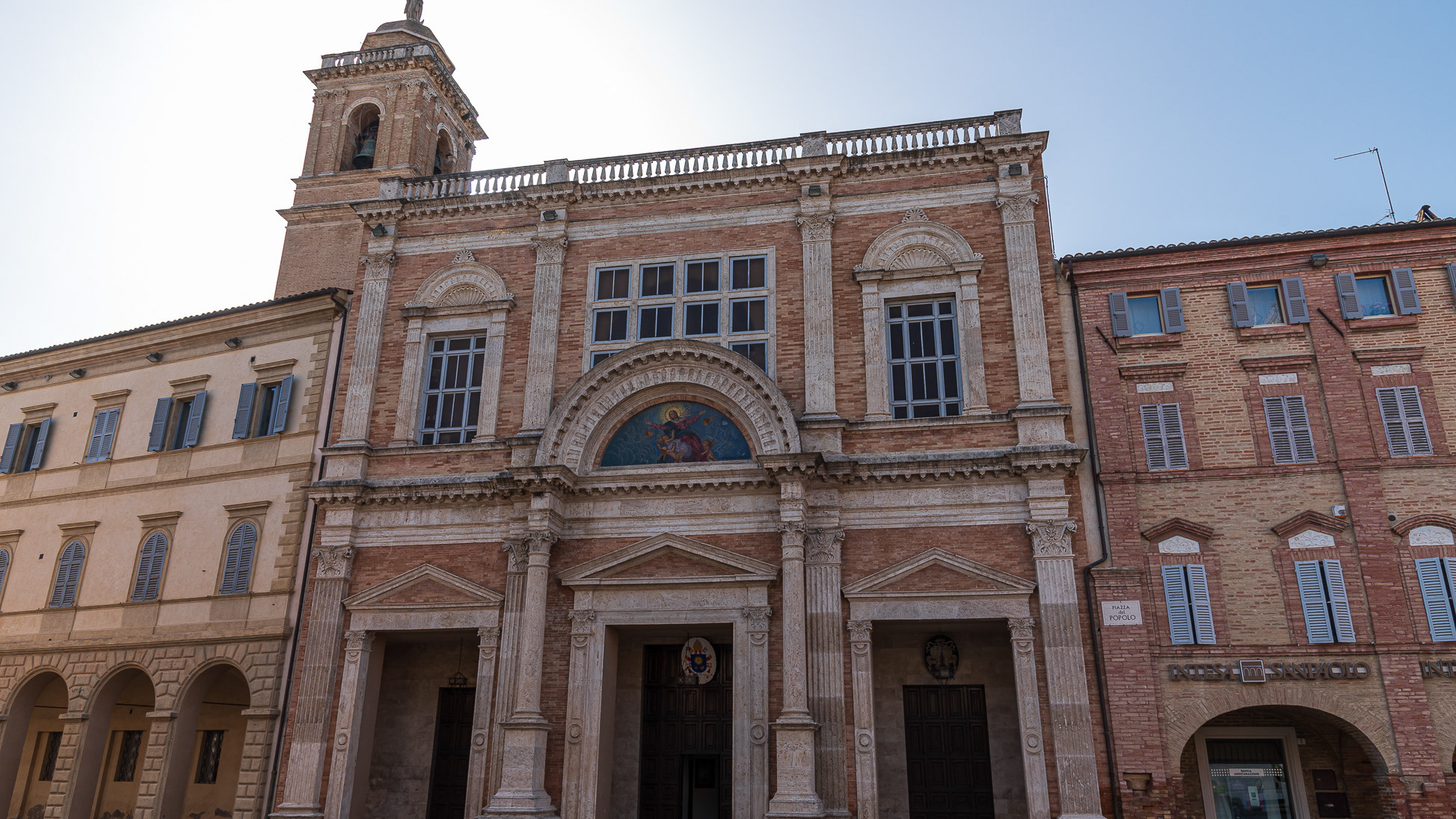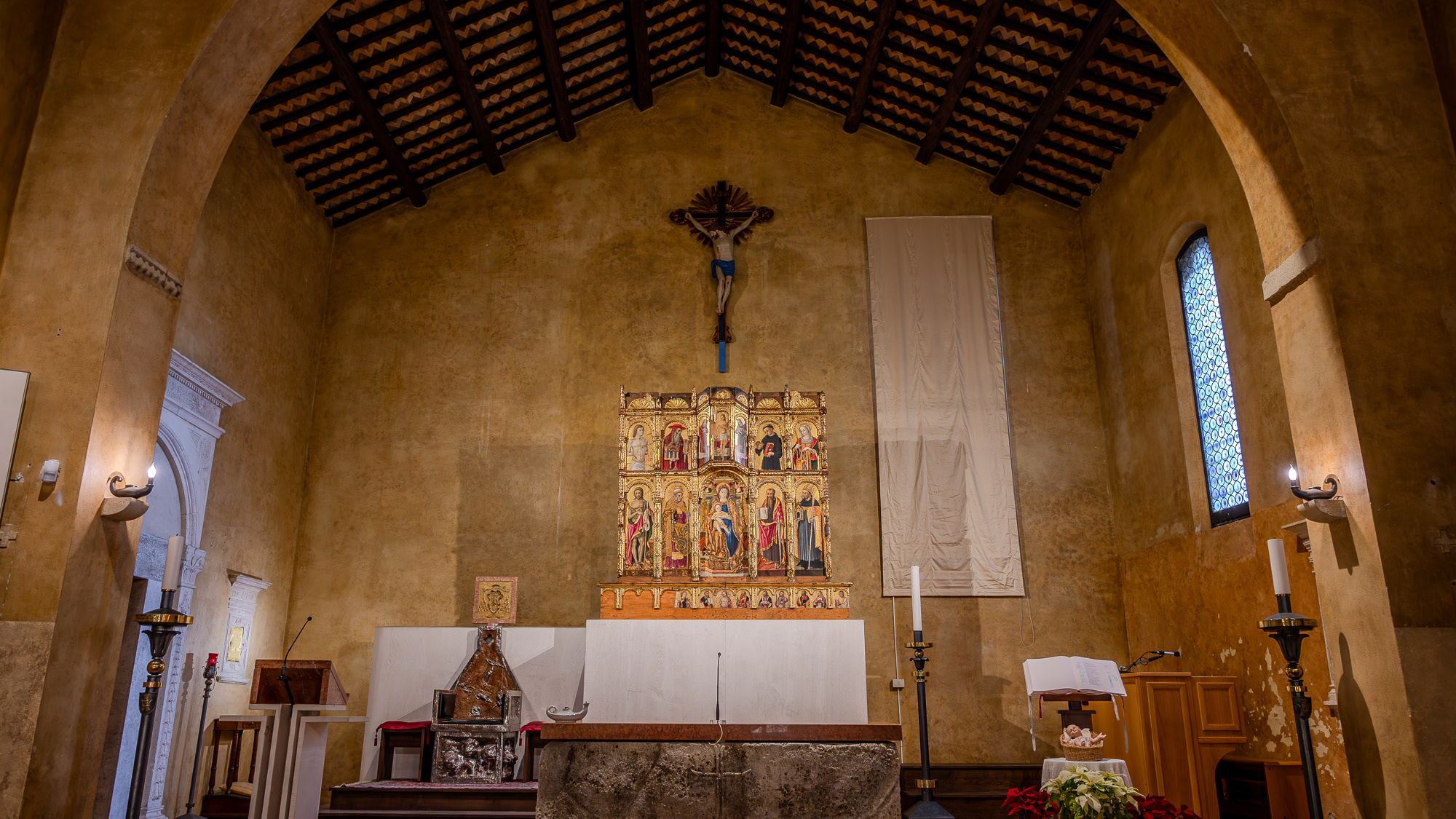Acquaviva Picena. Mother Church of San Nicolò
2024
The church is dedicated to S. Nicolò di Bari, patron saint of the city. The original construction dates back to the 16th c., and then assumed its current architectural forms during the 19th century
You may also like
2022
Ripatransone. The co-cathedral of SS. Gregorio Magno
The co-cathedral of Saints Gregorio Magno and Margherita is the main cult building in Ripatransone, in the province of Ascoli Piceno, co-cathedral of the diocese of San Benedetto del Tronto-Ripatransone-Montalto. It is a minor basilica and a triple sanctuary, as it also includes the chapel of the Madonna di San Giovanni and the crypt of Mercy and Death, considered temples in their own right.

2022
Offida. Collegiate Church of S. Maria Assunta
Collegiate Church. Built between 1785 and 1798 by the Ticino architect Pietro Maggi, who substituted and profoundly changed the design by Ascoli Lazzaro Giosafatti; it has a neoclassical Louis XVI interior and a facade built only at the end of the nineteenth century in an eclectic style of brick and travertine. Inside, among other things, there is a thirteenth-century wooden casket with 26 ivory figurines of northern art, a fourteenth-century processional cross, a fifteenth-century reliquary, a sixteenth-century wooden group, a wooden crucifix by Desiderio Bonfini (1612) , paintings of the fourteenth, fifteenth and sixteenth centuries (Crivellesque school and school of Pietro Alemanno). The choir carved with twisted columns and mirrors in Verona briar with two orders of 14 stalls was built by Alessio Donati for the church of Santa Maria della Rocca but was transferred in 1794 to the Collegiate, together with the relics of San Leonardo di Noblac preserved in a urn placed inside the main altar, also in wood. On 12 November 1994 the body of Blessed Corrado da Offida was placed in the third altar on the left, solemnly moved from Perugia, where it had been kept in the now no longer consecrated Church of San Francesco al Prato. The church, despite the distance, was affected by the strong earthquake that occurred in L'Aquila on 6 April 2009: in fact, on the day of the earthquake some pieces of plaster fell off the bell tower.

2025
Grottammare. Spectacular glimpses.
It rises on the shores of the Adriatic Sea and is located north of the mouth of the Tesino River. The town extends along the coast to the slopes of the surrounding hills.
2022
Ascoli Piceno, Marche. The Cathedral of San Emidio
The city's cathedral, dedicated to the patron saint, stands on the site of a Roman public building, perhaps the Basilica del Foro, and is the result of multiple construction events that substantially range from the 11th to the 16th century.

2025
Adriatic Sea and Trabocchi Coast.

2024
Torre di Palme. Church of Sant'Agostino
Church of Sant'Agostino. the Polyptych by Vittore Crivelli. The building is entirely made of brick and has two entrances. The interior has a single room, covered by wooden trusses.

2025
Adriatic Sea. Cupra Marittima.
2022
Offida, Ascoli Piceno. Church of S. Maria della Rocca
The church is located on the western edge of the town, surrounded on three sides by cliffs that open onto two valleys. It is a Romanesque-Gothic brick construction, built by Maestro Albertino in 1330 on a pre-existing small Benedictine church. The façade, facing the outside of the town, is articulated by pilasters and on the opposite side there are three high polygonal apses with white stone pilasters, single lancet windows and Gothic arches. On the central apse there is a Romanesque-Gothic portal that leads into the crypt (3 then 5 naves), as wide as the upper church and decorated with frescoes attributed to the Master of Offida. The upper church, with a single hall according to the tradition of the mendicant orders, preserves frescoes of Giotto influence, still attributed to the Master of Offida (those of the transept are dated by an inscription to 1367) and others attributed to Giacomo da Campli (15th century) . Part of the original decorations were also lost due to the deterioration of the roof. In the side altars, erected in different eras, there is the one dedicated to Saint Andrew, from the 15th century, with an altarpiece frescoed on the wall by Vincenzo Pagani. During the advance of the allied troops, between 16 and 18 June 1944 some German soldiers had completely undermined the church so that the rubble was in the way of the allies, but none of the thirty mines exploded and the inhabitants attributed the episode to a miracle of the Virgin. On the left side of the first step of the staircase leading to the church a sheep is represented eating a four-leaf clover; popular belief has it that if you position yourself on it, walking backwards along the staircase, with your eyes closed, your wish will be fulfilled.
2022
Wonderful view of the Marche hills
The Marche, a region of eastern Italy, rises between the Apennine mountains and the Adriatic Sea.

2024
Loreto. The Basilica of the Holy House
The Basilica of the Holy House is one of the main places of veneration of Mary and one of the most important and visited Marian shrines of the Catholic Church. It is located in Loreto.
